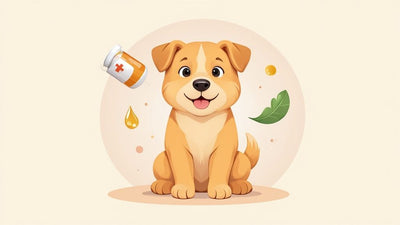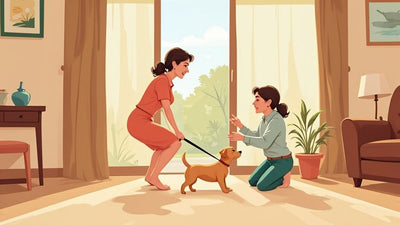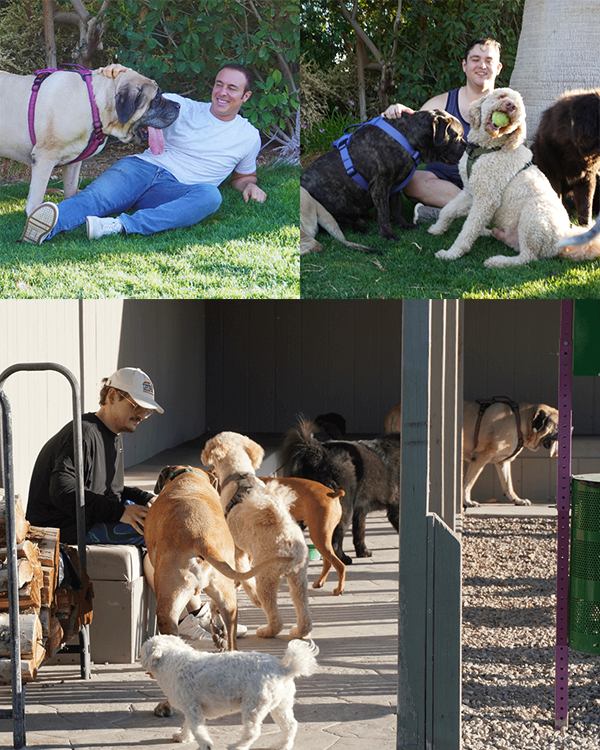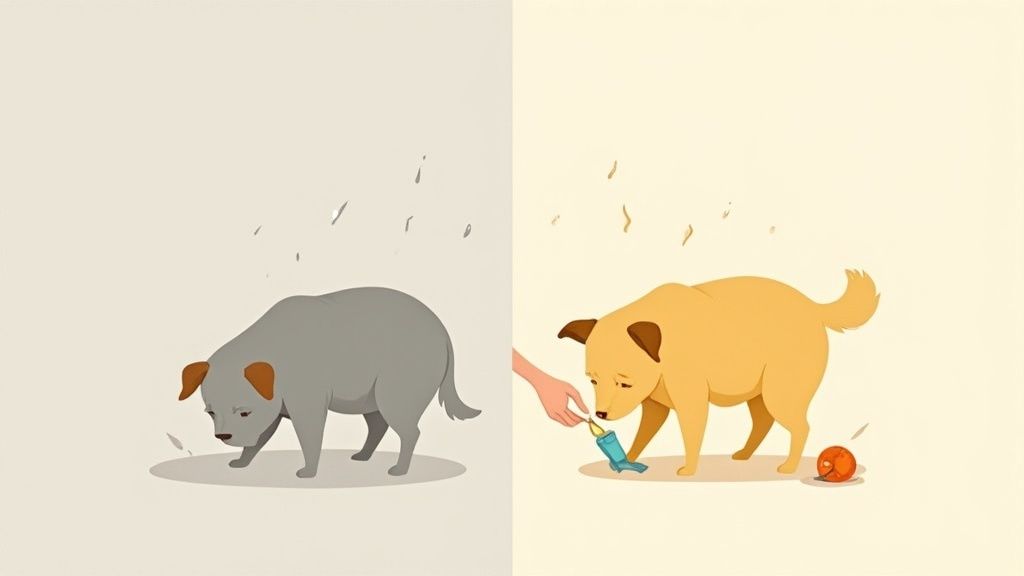
Supporting Your Dog Through Depression: A Gentle Guide
It’s heartbreaking when your dog’s inner light seems to dim. While there’s no magic wand for dog depression, the journey to helping your best friend feel like themselves again is paved with understanding, patience, and gentle, consistent care. Small, supportive shifts in their routine, environment, and nutrition can make a world of difference, helping them rediscover their joy.
Quick Steps to Support Your Dog's Emotional Health
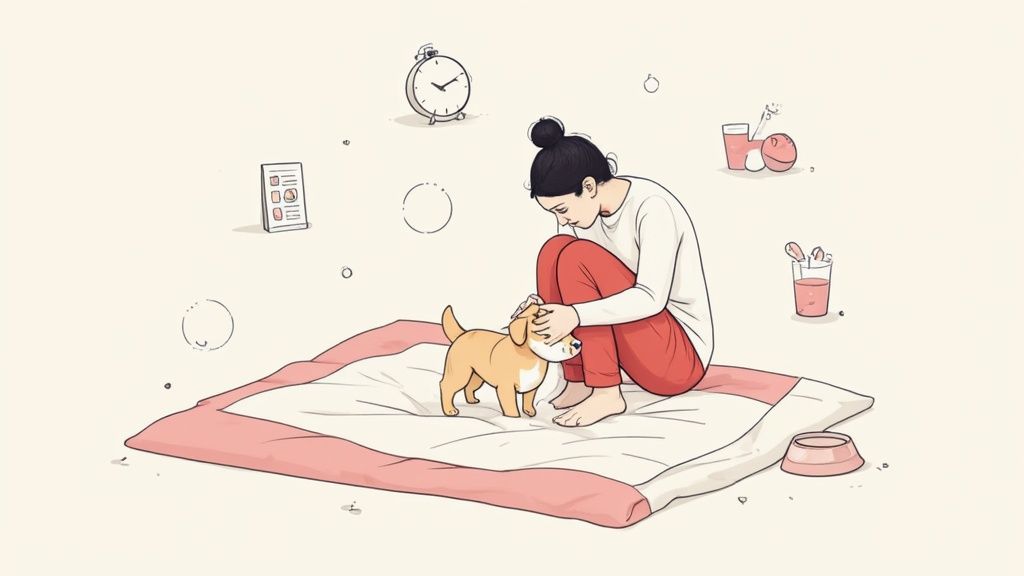
It’s tough when your dog’s tail stops wagging and their eyes lose that familiar spark. We understand. You're not alone in those late-night worries, trying to figure out how to bring back their happiness. The good news? Helping your dog through this is a journey you can start together, today, with a few supportive steps.
Your very first move should be booking a visit with your veterinarian. So many physical health challenges, from nagging joint discomfort to thyroid issues, can look like sadness. Getting a professional check-up is the only way to be sure you're supporting the real issue right from the start.
While you're waiting for that vet appointment, you can begin making gentle adjustments at home. Focus on creating a predictable and comforting routine. This kind of consistency can be incredibly soothing, offering a sense of security to a dog who might feel emotionally lost.
Starting the Journey to More Good Days
Even tiny changes can have a huge impact on your dog's emotional state. Try weaving a few of these simple actions into your daily life:
- Enrich Their Environment: Introduce a new puzzle toy or simply rotate their existing ones to reignite their curiosity. Even a few minutes playing a simple "find the treat" scent game can get their mind working in a positive way.
- Encourage Gentle Movement: A short, quiet walk around the block can do more good than a stressful trip to a chaotic dog park. The goal is connection and calm, not intensity.
- Support Their Nutrition: Just like with us, what a dog eats can influence their mood. Providing targeted nutritional support for brain health is a cornerstone of any holistic plan for their well-being. For a deeper dive, explore our guide on how supplements like NeuroChew™ can aid a dog's emotional health.
To help you get started, we've put together a simple table outlining the core strategies. It's not about a quick fix, but about building a strong, supportive foundation for your dog's progress.
Key Strategies for Supporting Your Dog's Mood
| Approach | Description | Expected Benefit |
|---|---|---|
| Veterinary Check-Up | A complete physical exam to rule out underlying medical conditions that mimic sadness. | Ensures you're addressing the correct problem and not overlooking a health issue. |
| Consistent Routine | Sticking to predictable times for meals, walks, and bedtime. | Helps reduce anxious feelings and provides a strong sense of security and stability. |
| Gentle Enrichment | Introducing simple, low-pressure activities like puzzle toys or short, calm walks. | Stimulates their mind and body without causing stress, slowly rebuilding confidence. |
| Nutritional Support | Providing a balanced diet with supplements that support brain health and mood. | Helps maintain healthy brain chemistry and provides building blocks for emotional comfort. |
Remember, each of these strategies works together to create an environment where your dog can begin to feel better. The key is to be patient and celebrate the small wins along the way.
Get Your FREE Dog Brain Health Guide

Get instant FREE access to today's top ways to help your best friend live a longer, healthier, happier life.
- 39 value-packed pages of expert insights
- Early-detection tips for cognitive decline
- Top brain-boosting superfoods
- Vet-approved mental sharpness strategies
- Fun IQ tests for your dog
Recognizing the Signs of Canine Depression
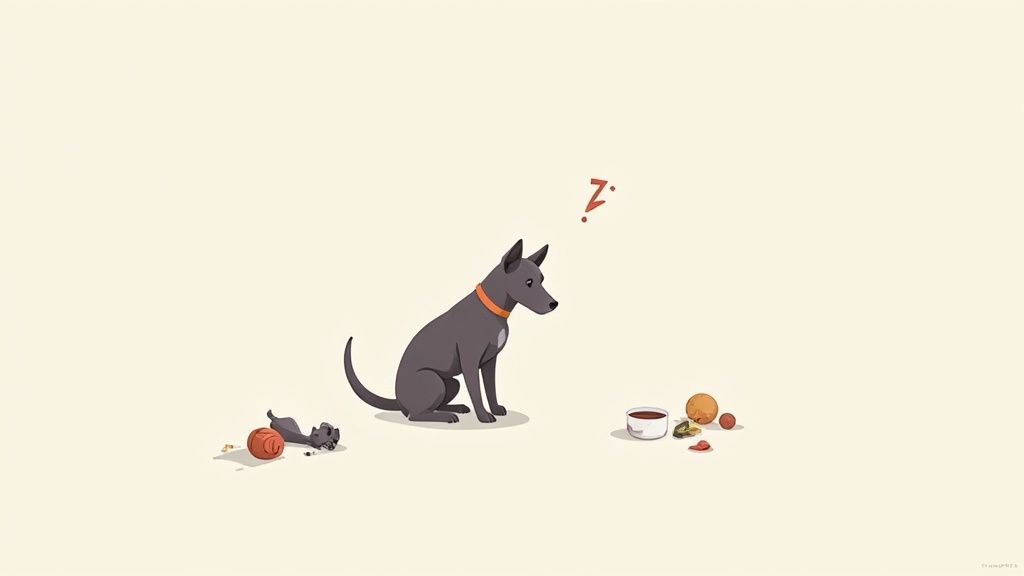
You know your dog better than anyone. So when the happy thump-thump of their tail against the floor goes silent, or their favorite toy lies forgotten in a corner, it's impossible not to worry. That’s a feeling we understand completely. Learning to read the subtle shifts in their behavior is the first, most crucial step in helping them get back to their old selves.
Our dogs can't use words to tell us they're feeling down. Instead, they communicate through their actions—or lack thereof. These clues are often more like quiet whispers than loud alarms, which makes them easy to overlook or chalk up to something else.
Behavioral and Emotional Indicators
One of the most telling signs is a sudden loss of interest in things they used to adore. Maybe your co-pilot for car rides suddenly refuses to hop in, or the dog park social butterfly now hides behind your legs. You might even notice them actively withdrawing, choosing to be alone in a quiet room rather than with the family.
Seeing these changes can be both confusing and heartbreaking. The key is to observe them as patterns, not isolated incidents.
- Social Withdrawal: Is your dog hiding or avoiding you, your family, or other pets?
- Reduced Enthusiasm: Do they still greet you with that whole-body wiggle when you come home?
- Unusual Clinginess: Sometimes the opposite happens, and a once-independent dog becomes your shadow, constantly needing reassurance.
- Excessive Licking: Compulsively licking their paws can be a self-soothing behavior, much like a person biting their nails.
Physical Changes to Watch For
Emotional distress often shows up in physical ways. Changes in your dog's appetite and sleep schedule are big red flags that something isn’t right. Simply paying closer attention to these daily routines can tell you a lot.
Is your dog sleeping way more than usual, or are they pacing the house all night? Have they started snubbing their dinner bowl, even when it’s filled with their favorite food? These physical symptoms are almost always connected to their emotional state.
"A dog's sudden inactivity is a powerful signal. When they stop engaging with the world, it's often their way of telling us that something deeper is going on, whether it's physical discomfort or emotional distress."
Even a perfectly house-trained dog might start having accidents inside. This isn't defiance; it's a sign that they're not feeling well, either emotionally or physically.
Distinguishing Sadness from Other Conditions
It's absolutely critical to remember that many symptoms of sadness look exactly like signs of other health problems. This is especially true in senior dogs. What appears to be a low mood could actually be chronic discomfort from arthritis, a metabolic issue like hypothyroidism, or even the initial stages of cognitive decline. Our guide on recognizing canine cognitive dysfunction symptoms can help you spot the differences.
While we often rely on our pets for emotional support, it's a two-way street—their mental health needs our attention, too. Globally, depression affects about 5.7% of human adults, and the emotional bond we share with our animals is incredibly complex. For more details on this, check out these global mental health findings on who.int.
The most important takeaway is this: never assume you know the cause. Before you try to manage what looks like sadness on your own, a full check-up with your veterinarian is non-negotiable. They can rule out any underlying medical conditions, giving you a clear path forward to help your best friend find their joy again.
Getting to the Root of Your Dog's Sadness
When your dog's happy tail wags seem to have vanished, there's usually a reason. Figuring out why your once-bouncy companion is suddenly withdrawn is the first, most critical step toward helping them get their spark back.
Dogs are creatures of habit who find comfort in predictability. When their world gets shaken up by a major change, it can feel like the ground has disappeared from under their paws. These aren't just minor bumps in the road; to them, these events can be truly significant.
Major Life Changes Can Hit Hard
Some of the most common triggers for depressive-like behaviors are big shifts in a dog's home life or social circle. Dogs are incredibly sensitive, and an event we might take in stride can feel like a devastating loss to them.
Try to see it from their point of view. A dog’s universe is built around their family pack and their familiar territory. When one of those pillars is suddenly removed or changed, their entire sense of security can be shaken.
Common triggers we see time and again include:
- Losing a Companion: This is a huge one. Whether it’s a person or another pet in the home who has passed away or left, the empty space is felt deeply. Yes, dogs absolutely grieve.
- Moving to a New Home: A new house is a sensory overload of unfamiliar sights, sounds, and smells. For a dog, it means their comforting landmarks are gone, which can be incredibly stressful.
- Shifting Family Dynamics: Bringing home a new baby, a partner moving in, or even a child leaving for college completely rewrites the rules of the pack and daily life.
- A New Daily Routine: Did you just start a new job with longer hours? Your dog doesn’t understand work schedules. All they know is that you’re suddenly gone more, and that absence can feel heavy.
We understand. Seeing your dog wait by the door for a family member who isn’t coming back is one of the most heartbreaking things a pet parent can witness. Acknowledging their grief is the first step in helping them through it.
Environmental and Social Pressures
Beyond those big, obvious life events, a dog’s daily environment has a massive impact on their emotional state. Chronic boredom from a lack of stimulation can look a lot like a low mood. After all, most dogs were bred to do a job, and when their smart, active minds are left idle, their spirit often follows.
This is especially true for intelligent and high-energy breeds who need more than just a quick walk around the block to feel fulfilled. They need a purpose.
- Not Enough Mental Work: A home without engaging toys, puzzle feeders, or training games can leave a dog feeling empty and lethargic.
- Too Little Social Time: Dogs are social creatures. Long periods of isolation without positive interaction with their people or other friendly dogs can be genuinely difficult.
- A Frightening Experience: A scary event, like an encounter with an aggressive dog or being spooked by a loud thunderstorm, can create a lasting fear that causes them to withdraw from the world.
Pinpointing the "why" is the key to helping your dog feel better. For a deeper dive into how a dog's world shapes their actions, check out our comprehensive guide to canine anxiety and behavior. Once you can identify the source of their sadness, you can begin making the small, meaningful changes that will help them feel more secure.
How Your Vet Will Approach a Diagnosis
Walking into the vet's office with a cloud of worry over your dog's well-being can be really tough. It's that feeling of just wanting answers and a clear plan to help them feel like themselves again. Knowing what to expect during the appointment can make a world of difference, helping you feel more in control and better prepared to advocate for your best friend.
The diagnostic process isn’t about a single test for depression; it’s more like a careful investigation to get to the root of the changes you're seeing at home. Think of it as a journey you and your vet are taking together, piece by piece.
The first stop is always a comprehensive physical exam. Your vet will give your dog a thorough nose-to-tail check, feeling their joints, listening to their heart, examining their teeth, and palpating their abdomen. This is absolutely critical because so many physical challenges—like the nagging discomfort of arthritis or a hidden dental issue—can look a lot like sadness or lethargy from the outside.
Your Observations are Invaluable Clues
After the hands-on exam, your vet will put on their detective hat, and you become their most important source of information. They'll ask a lot of specific questions about your dog's life and the behaviors that sparked your concern. The more detail you can provide, the clearer the picture becomes.
Get ready to chat about things like:
- The Timeline of Changes: When did you first notice something was off? Did it happen overnight, or has it been a slow, gradual slide?
- Recent Life Events: Has anything significant changed in your household? A new baby, a move, a different work schedule, or the loss of another pet can all have a huge impact.
- Daily Routines: What's their day-to-day really like now? Are they still cleaning their food bowl, or are they picking at their meals? Do they still get excited for their morning walk?
"The stories you share about those small, day-to-day moments—like when your dog stands at the back door but doesn’t want to go out—are often the most revealing pieces of the puzzle for a veterinarian."
Looking Deeper with Diagnostic Tests
Depending on what they find during the physical exam and what you've shared, your vet might suggest some diagnostic tests. This isn't a cause for alarm; it's just a standard way to rule out common medical issues that are known to mimic sadness.
Blood work is one of the most powerful tools in their kit. A complete blood count (CBC) and a chemistry panel can tell them so much about what’s happening on the inside. These tests can flag everything from organ function concerns and hidden infections to metabolic problems like hypothyroidism, a classic reason for low energy and mood changes in dogs.
Your role in all of this is huge. Jotting down a few notes about your dog's behavior, appetite, and energy levels in the days leading up to your visit can be incredibly useful. This gives your vet concrete information to work with, helping them build a supportive and effective plan to bring the happy back into your dog's life.

Support Your Dog's Brain Health with NeuroChew™
As mentioned in this article, NeuroChew is the first dog chew designed to support both cognitive function and healthy circulation. Perfect for dogs showing early signs of cognitive decline or for proactive brain health support.
Gentle And Effective Support Pathways
When you realize your dog's inner light has dimmed, your first thought is how to bring it back. Helping them through this is all about patience and gentle support. The focus is on creating "more good days" rather than finding an instant fix. It’s a path many of us have walked, and it’s about building a supportive world that nurtures your dog back to emotional health.
A holistic approach is almost always the best way forward. This just means looking at your dog's entire world—their mind, their body, and their home—and making small, positive changes across the board. The goal isn't to force happiness but to create opportunities for their natural joy to resurface on its own.
Creating An Enriching Home Environment
One of the kindest things you can do for a withdrawn dog is to make their world more interesting without overwhelming them. This is the whole idea behind environmental enrichment. It’s simply the art of adding gentle stimulation to their day to coax their natural curiosity back to the surface.
Put yourself in their paws for a moment. For a dog who has lost interest in life, the same old routine can feel flat and uninspiring. By introducing new, low-pressure experiences, you can help their brain forge new positive connections and rediscover the joy of engagement.
- Wake Up Their Senses: A dog’s sense of smell is incredibly powerful, so use it! Hide some high-value treats in a snuffle mat or around the room to encourage them to forage. Even bringing in a unique scent from your walk, like a pinecone or an interesting leaf, can pique their interest.
- Keep Toys Fresh: You don't need to buy a dozen new toys. Just rotating their existing ones every few days can make them feel brand new and exciting again.
- Offer a Safe Haven: Make sure they have a quiet, comfortable spot where they can retreat when they feel overwhelmed. A cozy bed tucked into a low-traffic corner of the house provides a real sense of security.
The Power Of Gentle Exercise And Routine
Just like for us, movement is a natural mood-lifter for dogs. When a dog is feeling down, a long, strenuous hike might be too much to ask. Instead, the focus should be on short, consistent, and positive outings that gently rebuild their confidence and spirits.
A predictable daily routine can also serve as a powerful emotional anchor. Knowing when to expect meals, walks, and quiet time can significantly dial down anxious feelings that so often accompany depressive behaviors. A simple, structured day sends a clear message: their world is safe, stable, and predictable.
This hierarchy diagram shows why a vet visit is the crucial first step, ruling out physical causes before you start any behavioral plan.
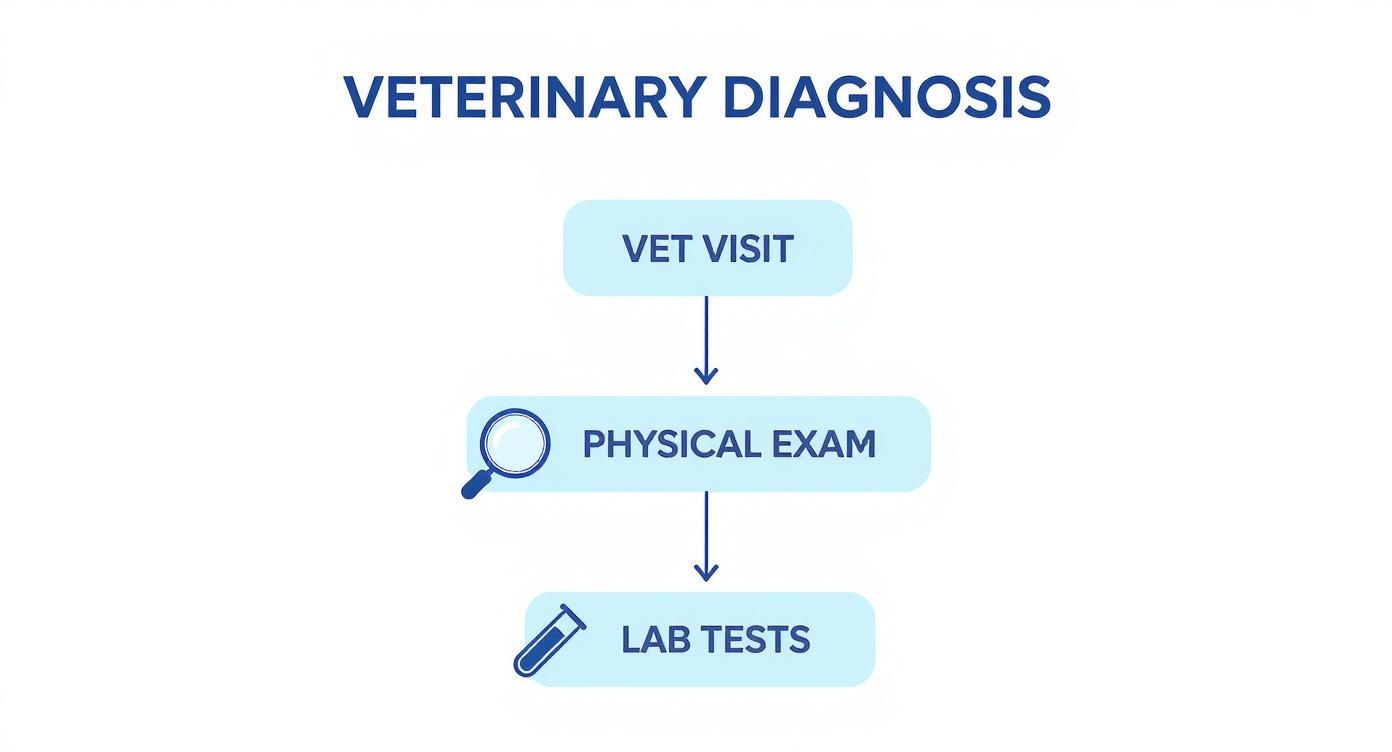
As you can see, a physical exam and lab work form the foundation of any reliable diagnosis, ensuring that the support plan you create is addressing the real root cause of the problem.
Behavior Modification And Positive Reinforcement
"Behavior modification" might sound clinical, but it’s really just about gently encouraging positive actions. The cornerstone of this entire approach is positive reinforcement, which simply means rewarding the small glimmers of progress you want to see.
Did your dog lift their head when you grabbed the leash? Offer some quiet praise and a tiny treat. Did they manage a tiny tail wag? Acknowledge it with a soft, happy tone. This isn’t about coddling their sadness; it's about celebrating every single step they take toward re-engaging with their world.
We measure success in peaceful nights and moments of recognition. A brief moment of play or a single happy tail wag is a huge win on this journey, and it deserves to be celebrated.
The bond we share with our dogs is a powerful two-way street for emotional wellness. It's interesting to note that in the United States, dog owners reported a 23% lifetime prevalence of depression, slightly lower than the 26% reported by cat owners, suggesting our canine companions may play a unique supportive role in our lives. You can explore more about these findings on pet ownership and mental health from YouGov.
Comparing Support Methods For Dog Depression
Navigating the options for helping your dog can feel overwhelming. To make it clearer, this table breaks down the most common approaches, their primary focus, and what you can generally expect.
| Method | Focus | Time To Improvement | Considerations |
|---|---|---|---|
| Environmental Enrichment | Stimulating the mind and senses | Days to Weeks | Requires creativity and consistency; low-cost and highly effective. |
| Behavior Modification | Reinforcing positive behaviors and interactions | Weeks to Months | Needs patience and consistency. Best results when the whole family participates. |
| Exercise & Routine | Improving mood and reducing anxious feelings | Immediate & Long-Term | Must be tailored to the dog's physical ability and energy level. |
| Pharmacotherapy | Rebalancing brain chemistry | 4-6 Weeks or more | Requires a veterinary prescription and monitoring. Best used with other therapies. |
| Nutritional Support | Supporting brain health and cognitive function | Weeks to Months | A gentle, supportive measure that complements all other support efforts. |
This isn't about picking just one method. The most successful plans often weave together elements from several of these columns, creating a comprehensive support system tailored to your individual dog.
The Role Of Medication In A Support Plan
Sometimes, all the love and support you provide at home isn't quite enough to lift the fog. In these cases, medication can be an incredibly valuable tool to help rebalance your dog's brain chemistry, making them more receptive to the behavioral and environmental changes you're working on. This is a conversation to have with your veterinarian, who can determine if it's the right step for your dog.
Medications like selective serotonin reuptake inhibitors (SSRIs)—such as fluoxetine, which is FDA-approved for dogs—are not "happy pills." Instead, think of them as a way to turn down the volume on intense anxiety and sadness. This gives your dog the mental breathing room they need to learn new, more positive ways of coping.
It's important to have realistic expectations. These medications can take four to six weeks to show their full effect and are always most successful when combined with a supportive, enriching home care plan.
Nutritional Support For Brain Health
Just as we support our own bodies with good nutrition, we can do the same for our dog's brain. The link between gut health, nutrition, and mood is becoming clearer every day. Providing key nutrients that support cognitive function and emotional balance is a gentle, natural way to contribute to their overall well-being.
Ingredients that support brain cell health and promote mental clarity can be a crucial piece of a holistic support plan. These natural compounds work alongside all your other efforts to help maintain your dog's cognitive function as they navigate these emotional challenges.
Ultimately, helping your dog through a period of sadness is a journey of love. By combining environmental enrichment, gentle exercise, positive reinforcement, and supportive nutrition, you create a powerful ecosystem of care. Every small improvement is a step toward bringing back the happy, engaged companion you know and love.
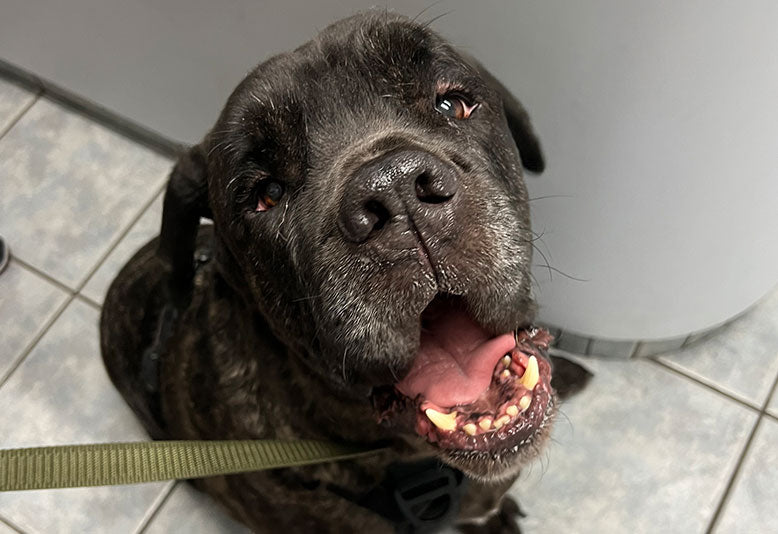
Real Results: How NeuroChew Helped Brutus Regain His Mental Clarity
Brutus was getting disoriented at night. After starting NeuroChew, he's more happy during the day and steady at night. He's back to his old self!
Creating a Supportive At-Home Care Plan
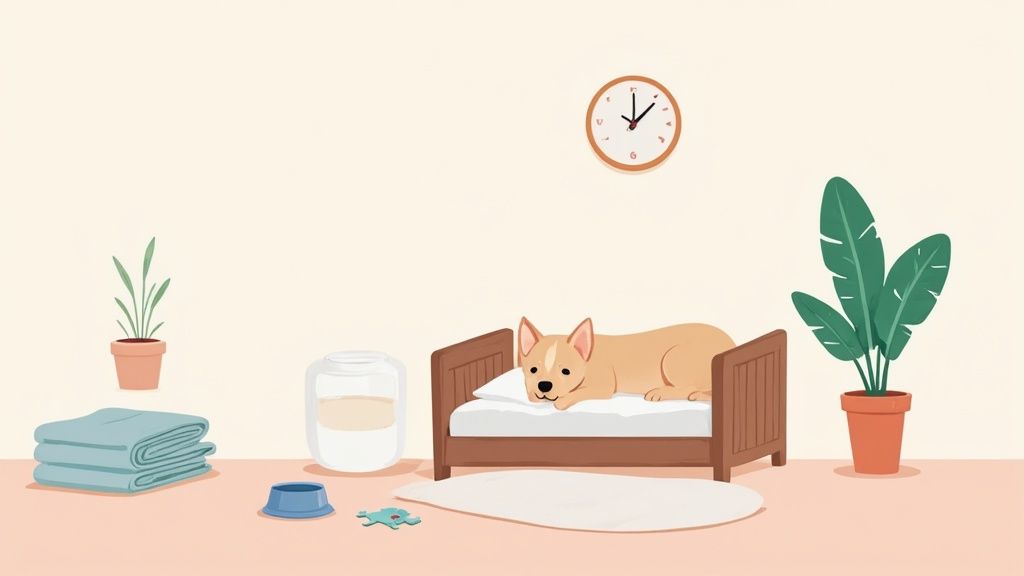
Your home is your dog's entire world, their safe harbor. When they seem down or lost, making that familiar space a source of comfort and gentle support is one of the most powerful things you can do. We get it—that feeling of wanting to do something, anything, to help them feel better right now. And the good news is, you absolutely can.
This isn’t about grand, sweeping changes. It’s all about the quiet power of consistency and small, supportive actions. A good at-home care plan is simply about creating an environment that helps your dog rediscover their spark one day at a time, focusing on bringing back more good days than bad ones.
Establish a Predictable Daily Routine
When a dog is feeling anxious or sad, their world can feel unpredictable and scary. A solid daily routine is like an anchor in a storm, offering a sense of security that is incredibly calming. Just knowing what comes next—when breakfast is served, when the afternoon walk happens, when it's time to settle down for the night—can reduce their anxious feelings and build a stable foundation for progress.
Try to lock in a few core activities:
- Set Meal Times: Feed your dog at the same time every morning and evening. This simple act creates two reliable high points in their day.
- Scheduled Potty Breaks: Regular trips outside, especially right after waking up and just before bed, create a comforting rhythm.
- Consistent Bedtime: A quiet, established wind-down routine helps regulate their sleep, which is absolutely critical for emotional balance.
Use Gentle Enrichment to Combat Boredom
A withdrawn dog can easily get stuck in a rut of doing nothing, which only deepens the sadness. Environmental enrichment is all about gently nudging their natural curiosity back to life without making them feel pressured. It’s a simple way to break the cycle and remind them that engaging with the world can feel good.
Think of it as creating small, positive interruptions. A puzzle feeder can turn a meal into a fun mental challenge. Hiding a few tasty treats in a snuffle mat encourages them to use their incredible sense of smell, a deeply satisfying activity for any dog. These tools help shift their focus away from their internal turmoil and onto something interesting.
It's so tempting to try and coax them into a big, exciting game of fetch. But for a dog who is feeling low, small victories are everything. Just celebrating the moment they finally nudge that puzzle toy is a huge step in the right direction.
Design a Calm and Safe Space
Every dog needs a den—a quiet, safe spot that is 100% their own. During a tough emotional time, this space becomes non-negotiable. It has to be a place where they can retreat and decompress without being overwhelmed by the comings and goings of the household.
Tuck their bed or crate into a low-traffic corner where they can still observe the family without being right in the middle of everything. Pile in their favorite soft blankets to make it extra cozy. Having this designated safe zone gives them the power to tap out when they need to, which is a crucial part of feeling secure again.
Knowing When to Seek More Help
Your care at home is a vital piece of the puzzle, but it's just as important to know when you're out of your depth. If you’ve been trying these strategies for a few weeks and see no improvement—or they seem to be declining—it’s time to call your veterinarian.
You should also think about getting a referral to a certified veterinary behaviorist if you notice:
- A complete refusal to eat or drink for more than 24 hours.
- An inability to settle down or rest, even in their safe space.
- New, worrying behaviors like compulsive licking or pacing.
Sometimes, what we see as sadness can be tangled up with other issues, particularly in our senior dogs. For a closer look at this, our guide on how to help a dog with dementia can offer some really valuable perspective.
Common Questions About Dog Depression
When you're worried about your dog, it's completely natural to have a million questions running through your head. You just want answers and a clear path to helping them feel better. We've put together some of the most common concerns we hear from pet parents to give you some clarity and support.
How Long Until My Dog Starts To Feel Better?
This is the big question, isn't it? The honest answer is that every dog is different, and their path to feeling better won't always be a straight line.
If your dog is dealing with a mild, situational sadness—maybe from a move or a change in routine—you might notice small improvements within a week or two just by making their life a little more fun and predictable.
For deeper issues, though, it's more of a long game. When you start behavior modification or add nutritional support to their diet, it often takes four to eight weeks to see a real, lasting change. It's so important to celebrate the small victories along the way, like the first real tail wag you've seen in days or a little nudge for a pat.
Are Some Dog Breeds More Prone to Sadness?
It's true that any dog can feel down, but certain breed characteristics can sometimes play a role. For example, highly intelligent and driven breeds like Border Collies or German Shepherds need a job to do. If they don't get enough mental stimulation, that frustration can turn into withdrawal or even destructive behavior.
We also see that dogs bred for close companionship, like Labrador Retrievers or Greyhounds, can be hit especially hard by the loss of a person or another pet they were bonded to. The key takeaway is to really know your own dog's unique needs for exercise, social time, and mental challenges.
How Do I Know if It Is Sadness or Just Old Age?
This is such a tough one, and something many of us with senior dogs grapple with. The signs can look identical at first glance—more napping, moving a bit slower, not as excited for playtime. The real clue often lies in their connection with you.
An old dog might take a while to get to their feet, but their eyes will still sparkle when you walk into the room. A dog experiencing depression might seem emotionally vacant, as if you’re not even there.
The only way to get a definitive answer is to see your veterinarian. They can run tests to rule out uncomfortable conditions like arthritis or check for cognitive decline, which gives you a much clearer understanding of what’s really going on with your old friend. Your observations are a huge part of that puzzle, so don't downplay what you're seeing at home.
At Furever Active, we're dedicated to helping you support your dog's well-being with gentle, effective care. Our NeuroChew™ supplement is formulated to naturally support brain health and emotional balance, giving your dog a better chance at more good days. Discover how NeuroChew™ can be part of your supportive care plan.
Share This Article

Support Your Dog's Brain Health with NeuroChew™
The first dog chew that supports both brain function and healthy circulation. Perfect for dogs of all ages.
- Enhances cognitive function & mental clarity
- Reduces anxiety without sedation
- Supports healthy blood circulation
- Made in USA with natural ingredients
60-Day Money-Back Guarantee • Free Shipping



